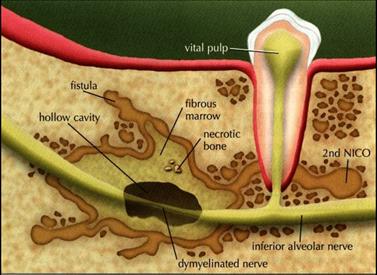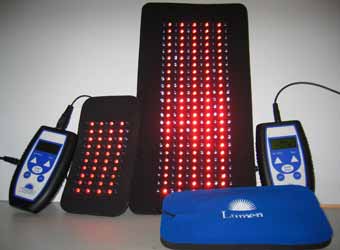 Could you have a chronic, life-threatening infection and not know it? I did and I want to share my story with you.
Could you have a chronic, life-threatening infection and not know it? I did and I want to share my story with you.
I have been through hell and back with my health and I’ve beat the odds that were stacked up against me. I’ve recovered from Multiple Chemical Sensitivity, Lyme Disease, toxic mold exposure, and a chronic infection in my jawbone. I will add adrenal exhaustion, chronic insomnia, and severe food allergies to the list as well. These things have not only served to make me a stronger person, but I’ve also learned what it takes to recover from chronic illness.
One of those things, a chronic infection of the jawbone, called a cavitation, was slowly and silently destroying my health. I had already been recovering from so many other of my health problems, but something was still just not right. It was a vague uneasy feeling that my body was always fighting just to maintain health. I was eating great and taking care of myself, but I would start sliding backwards toward ill health if I didn’t work HARD to maintain my health.
So, I went to see a Naturopath for a health evaluation. She did some testing and discovered that I had a cavitation in my jawbone that was where a wisdom tooth had been taken out decades earlier. Because I did not have any pain in that area, I had a hard time accepting that there was a festering infection that needed to be dealt with. I had always thought infections went hand in hand with pain.
It also didn’t help that I’d never even heard of cavitations. And later, I would come to find out, most dentists are unaware of them as well!
What is a Cavitation?
Most people know what a cavity is, but the word cavitation is confusing. Both of these words come from the same root word meaning hole. A cavity is a hole in the tooth, whereas a cavitation is a hole in bone. Unlike most tooth cavities, bone cavitations can’t be detected by simply looking at the bone, and or even using x-rays. Dr. G.V. Black, the father of modern dentistry, described this cavitation process as early as 1915 where he described a progressive disease process in the jawbone, which killed bone cells and produced a large cavitation area or areas within the jawbones. He was intrigued by the unique ability of this disease to produce extensive jawbone destruction without causing inflammation of the gums, jaw swelling, or a fever. Essentially, this disease process, which produces osteonecrosis, or dead bone, is actually a progressive impairment which produces small blockages of the tiny blood vessels in the jawbones, thus resulting in areas of dead bone, called osteonecrosis.
Research findings indicate that 45% to 94% of all cavitational lesions are found at wisdom teeth extraction sites. These areas are predisposed to develop these problems because they contain numerous tiny blood vessels which are apparently, easily damaged from the extraction process, and osteonecrosis can easily develop.
So, what’s the health risk?
Inside a cavitation, bacteria flourish and multiply. Cavitations act as a breeding ground for bacteria and their toxins. Research has shown these bacterial waste products to be extremely potent and toxic. Because of this constant infection, the body’s immune system can be compromised and many health problems can result, such as chronic fatigue, susceptibility to other illnesses, etc… As the bacteria multiply and the area of dead bone enlarges, the infection can spread and potentially be life threatening if it gets to the brain. Something like a cavitation that seems so harmless can destroy your health. And it was destroying my health.
How do I know if I have a cavitation?
Because they don’t show up very clearly on x-rays, getting a diagnosis of cavitations can be tricky. The Naturopath I saw used electro-dermal screening to pinpoint the cavitation problem. This technology, in the hands of a skilled practitioner, can be very helpful in finding potential cavitation sites. The Cavitat is another way to find possible cavitations by taking a 3-D ultrasonic scan of the mouth.
What can I do for a cavitation?
Most dentists recommend surgery for treatment of the cavitations- they surgically open up the area and remove the dead tissue and bacteria. The problem is that when the area heals, there could be the potential for bacteria to grow again causing another problem in the future.
Fortunately, there are other options. I learned about a type of light therapy that can heal cavitations naturally. These theraputic-grade LED lights emit infrared and far infrared radiation that stimulates healing in tissues of the body. Simple and easy to use, the pad is held over the area of the body for about 10 minutes a day and the lights penetrate the body to bring circulation and healing to the area. I invested in my own equipment and after using it regularly, my health improved and the cavitation started healing. This type of therapy has to be used regularly to maintain the improvements, but I love the light pad I bought and use it for other things as well, such as pain relief. 
Another newer treatment for cavitations that is being used by biological dentists, is injections of ozone gas into the cavitation site. Ozone will kill any bacteria, virus, and oxidize toxic substances before it breaks down to pure oxygen. It is proving to be another safe way to heal cavitations, but it has not been in use for long enough to have data on the long-term benefits of healing cavitations, but it looks like it has great potential.
**********************************
 Becky Mauldin, N.D. is a Naturopath, teacher, speaker, and author. She has authored two gluten-free cookbooks, Vibrant Health and Recipes for Life. Her story of recovery from an incurable illness has inspired many people around the world. She is known for making a healthy diet achievable for real people and real life.
Becky Mauldin, N.D. is a Naturopath, teacher, speaker, and author. She has authored two gluten-free cookbooks, Vibrant Health and Recipes for Life. Her story of recovery from an incurable illness has inspired many people around the world. She is known for making a healthy diet achievable for real people and real life.
Connect with her on Facebook and let her know what you think of this post.
********************************







Hi Becky,
Thanks for such interesting content about cavitations. I’m wondering, as the years have passed since you used this approach has your healing stood the test of time? Has the use of the Lumen 132 maintained the healing of your cavitations?
Blessings…and thank you!
Hello Tim,
Yes, I have been able to be free of any problems, but I do continue to use the Lumen light pad about once or twice a month over the area to maintain the healing. It could come back if I stop using it completely. I hope this helps!
Hi Becky,
I would like to know the exact model that you recommend for healing cavitations. When I click on the link in your post, it takes me to the website, but not to any specific model. Thanks so much for your post!
Hi Mary,
It was the medium sized light pad that they carry, the Lumen 132 I believe. Any size will work as long as you can cover the area being treated.
Hello Becky thanks so much for writing this article. I’m dealing with some cavitations as well, I was wondering how you knew they were healed? Thanks so much
Katie
Hi Becky,
Thank you for this article. What is the recomended frequency of the Lumen for cavitation healing?
Plamen
I have cavitations as well and am contemplating surgery in the next few weeks. I am intrigued by your post about this alternate healing method. Can you email me more information about how I can get the equipment, etc.? Thank you!
Jen, if you click on the link in the post above, it will take you to the exact equipment I used for the cavitation.
I also have a cavitation and my story is very similar to yours. I bought a laser (Q1000) and have had ozone therapy (which I still have from time to time). It's hard to say but accoeding to EAV testing it's not affecting my health any more and I feel (and look) a lot better. But it is a long process, no doubt about that. However I an going to continue down this path as I have heard that many people have been through surgery numerous times and not got rid of cavitations. It's scary to think of how many people are ill through them and are not aware at all. It took me 12 years of poor health before I came across the information and I was very ill indeed towards the end. So glad you're feeling better – I know exactly what it's like to be doing everything you can and still feel crap compared with others who are stuffing their faces with all sorts of bad stuff!!
Liz, Thanks for sharing your experience. I am glad to hear that your health has improved since healing your cavitation. Keep up the good work and thanks for stopping by!
Becky, we can count on you to bring us important & life changing infomation. That's why I'm your biggest fan! Agreed, electro-dermal screening is the way to go! I definitely want to hear more about the ozone therapy. I have a light pad that looks like yours, I wonder if it is similar?
Keep it comin!
This is great information to have and explained well. I hadn't heard of cavitations before, either. Not something a dentist typically brings up. Glad to know there are a couple of alternative therapies out there to help besides surgery!!
Very good article. Something we should look into if we have chronic health problems, as we are all attempting to be at our best physically.